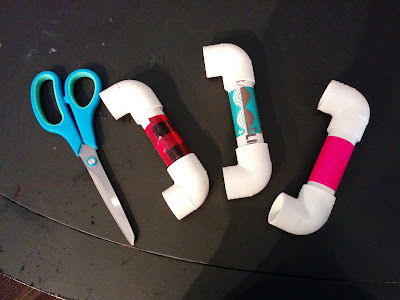Here's a tip sheet I made for guest speakers coming into middle school classrooms.
Tips for speaking to middle school students
* Plan what you’re going to say- make an outline with timing. Even if you don’t stick to it, at least it will give you a guideline of where your talk is heading and what you want to talk about.
* Think of ways you can ask the students to participate. This can be a question like, “raise your hand if you….” or asking individual students questions. Try to get a student to speak every few minutes, in order to keep their interest and keep them engaged in the conversation. If you raise your own hand while asking a question, it signals to students to raise their hands as well.
* If asking a whole group a question of any kind, give them plenty of time to process your question and think about their answer. After asking a question, count to 5 in your head (this will feel soooo long) before calling on someone or moving on.
* Visual aids will help keep students engaged. Pictures in a slide show, objects you can pass around, or something for students to look at or touch.
* Think about writing things on the board or on a large piece of paper- answers to student questions, diagrams of things you want to demonstrate or explain, vocabulary words, etc. Anything you write down for students to see will be something they can return their attention to instead of having it pass in and out of their ears.
* Think about the vocabulary you are using and your audience. Are you using technical language, acronyms, higher-level vocabulary, or concepts that need to be explained? It might be helpful to bring a visual aid of these new words. When asking students about their understanding, instead of asking, “does everyone know what ______ means?” ask, “who can explain to everyone what _______ means?” Students aren’t likely to admit they don’t know something if they think everyone else does know it. Always explain if there is any doubt about students’ understanding.
* Have a sense of humor. Kids can be silly, weird, and tired of having adults speak to them. It’s okay to joke with them, and not take yourself too seriously.
* Tell stories. Personal stories connect you with your students.
* If you are speaking longer than 25 minutes, try to break up your talk with some kind of movement, stretching, or a break. Students get restless and tune out around 20 minutes.
*If you’re able, and the space allows, move around the space as you talk. Moving between desks occasionally or to the back allows you to engage more closely with the students and keeps their attention from wandering.














